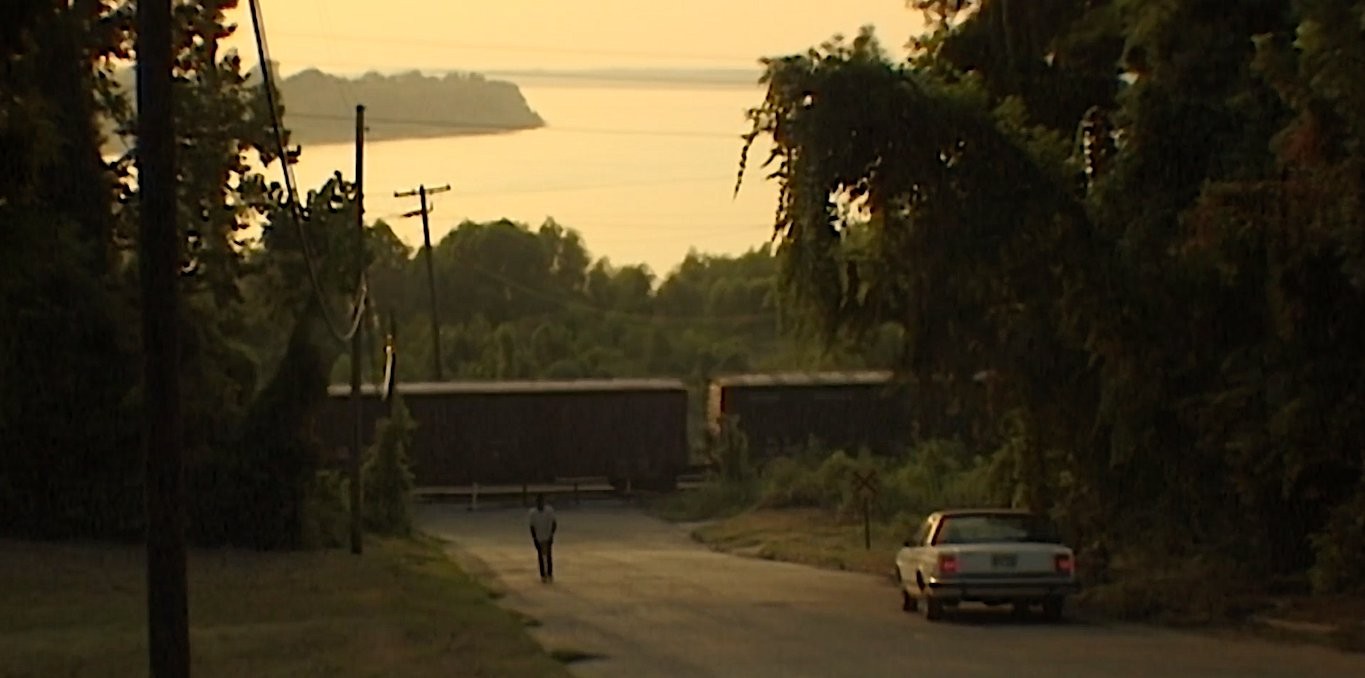South

Based on the lynching of a black man by three white men, Sud depicts a Texas nostalgic for the slavery of its past. Alternating still frames and long tracking shots, Akerman reconstitutes the terrible event that took place in Jasper in June 1998. A black man was chained behind a truck and dragged for miles down a road by three young white men. The victim was a musician. The criminals belonged to far-right groups.
| Director | Chantal Akerman |
| Share on |
This is a simple and magnificent film whose dramatisation is exceptionally assured, with wonderfully framed shots showing us the poverty-stricken, unfortunate and mythical atmosphere in America’s south, where slavery and segregation originated. Some of the inhabitants talk, recalling this past, and then we have the film’s present: a black man lynched by white supremacists. The uncomfortable sheriff describes the crime, and between each interview, the houses along the roads illustrate the poverty, then the church service where people sing to honour the memory of this musician dragged down a road until he died. The film’s rigour gives it strength and dignity. Each frame establishes a distance that commands respect. Outside the church, the swings, filmed from afar where little girls swing before stopping, leaving the seats swaying, empty and sad, in front of the church where the memory of the service leaves a catch in our throats. And then, the unbearable final shot of the road, a shot that lasts the time of the agonising ordeal described by this film. Every now and then, a car drives along this road and, on the day of the crime, must surely have seen what was going on.
Claire Simon
Filmmaker
- Année 1999
- Pays Finland, Belgium, France
- Durée 71
- Producteur AMIP, Paradise films, INA
- Langue English
- Sous-titres French
- Résumé court Based on the lynching of a black man by three white men in 1998, “South” portrays the slaver past of Texas, and what remains of it.
- Programmateur Claire Simon|Réalisatrice;
This is a simple and magnificent film whose dramatisation is exceptionally assured, with wonderfully framed shots showing us the poverty-stricken, unfortunate and mythical atmosphere in America’s south, where slavery and segregation originated. Some of the inhabitants talk, recalling this past, and then we have the film’s present: a black man lynched by white supremacists. The uncomfortable sheriff describes the crime, and between each interview, the houses along the roads illustrate the poverty, then the church service where people sing to honour the memory of this musician dragged down a road until he died. The film’s rigour gives it strength and dignity. Each frame establishes a distance that commands respect. Outside the church, the swings, filmed from afar where little girls swing before stopping, leaving the seats swaying, empty and sad, in front of the church where the memory of the service leaves a catch in our throats. And then, the unbearable final shot of the road, a shot that lasts the time of the agonising ordeal described by this film. Every now and then, a car drives along this road and, on the day of the crime, must surely have seen what was going on.
Claire Simon
Filmmaker
- Année 1999
- Pays Finland, Belgium, France
- Durée 71
- Producteur AMIP, Paradise films, INA
- Langue English
- Sous-titres French
- Résumé court Based on the lynching of a black man by three white men in 1998, “South” portrays the slaver past of Texas, and what remains of it.
- Programmateur Claire Simon|Réalisatrice;
